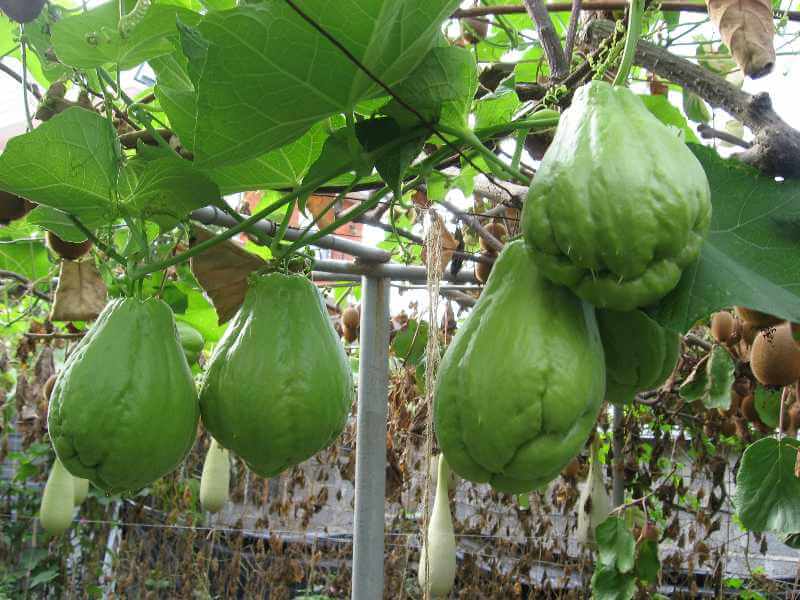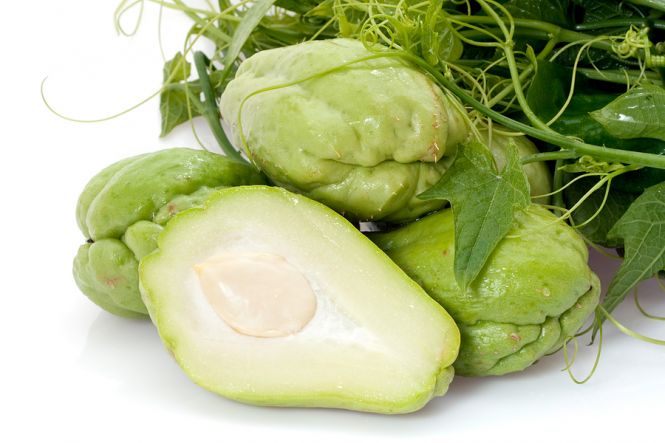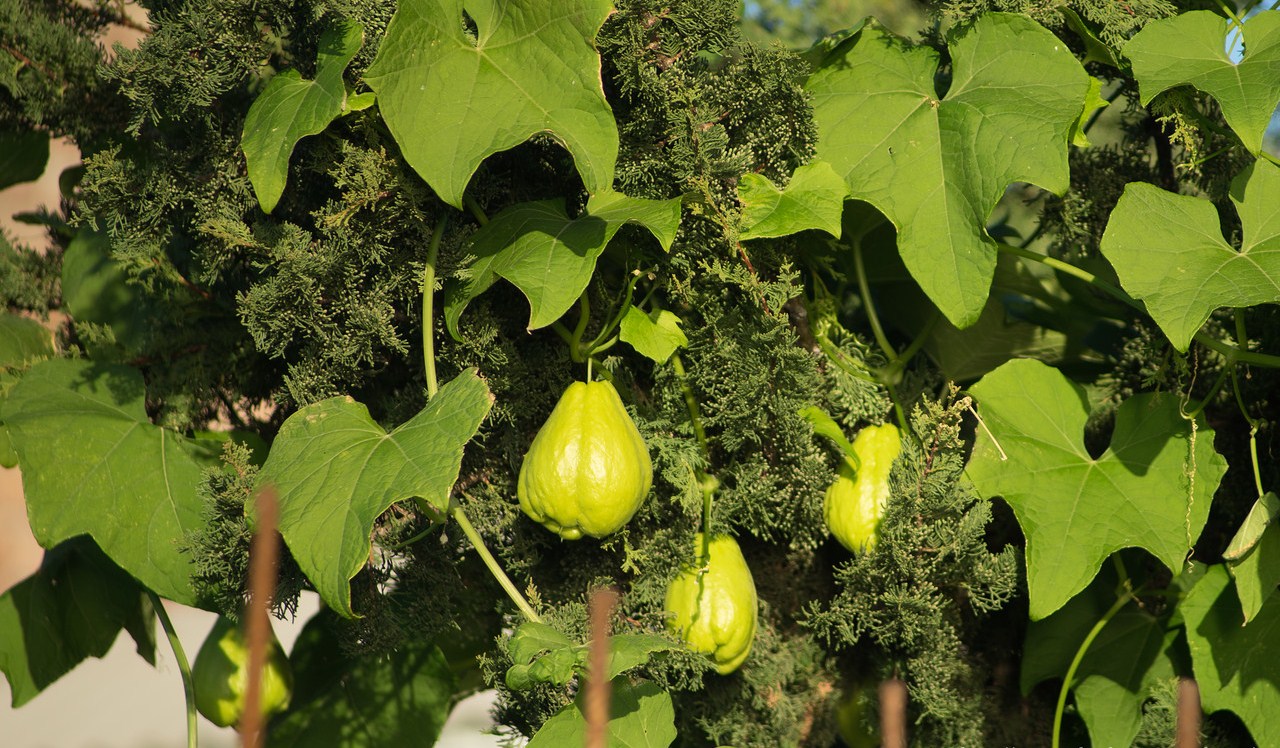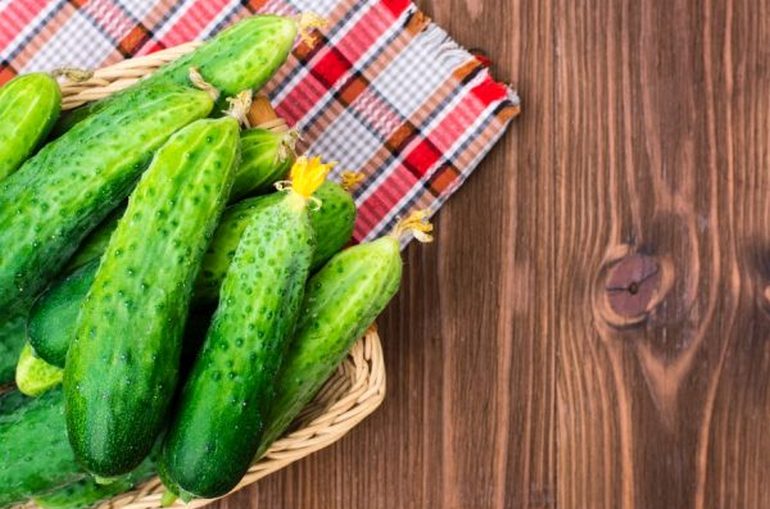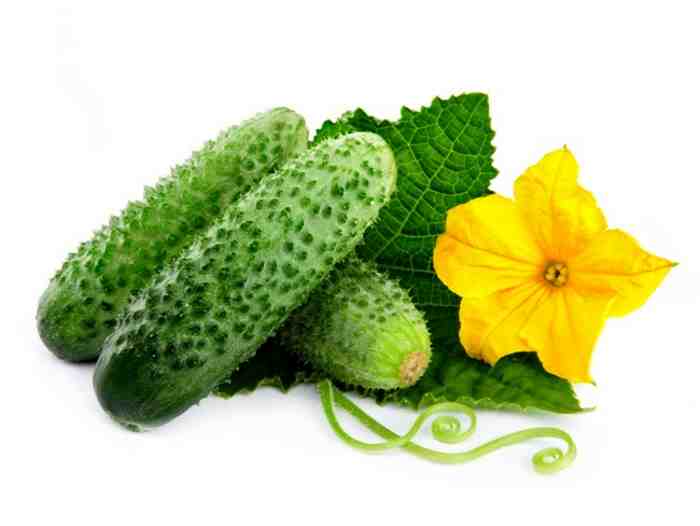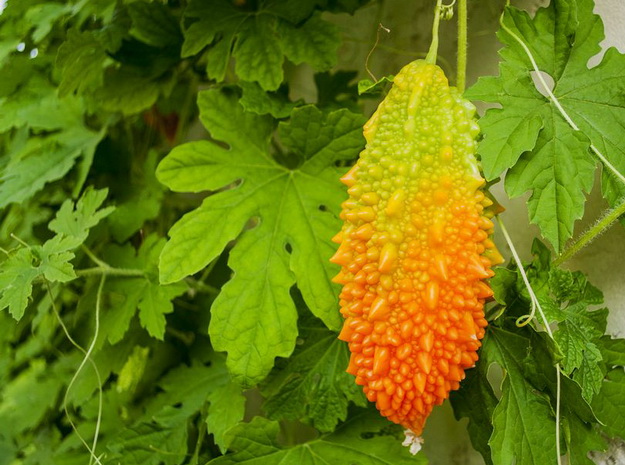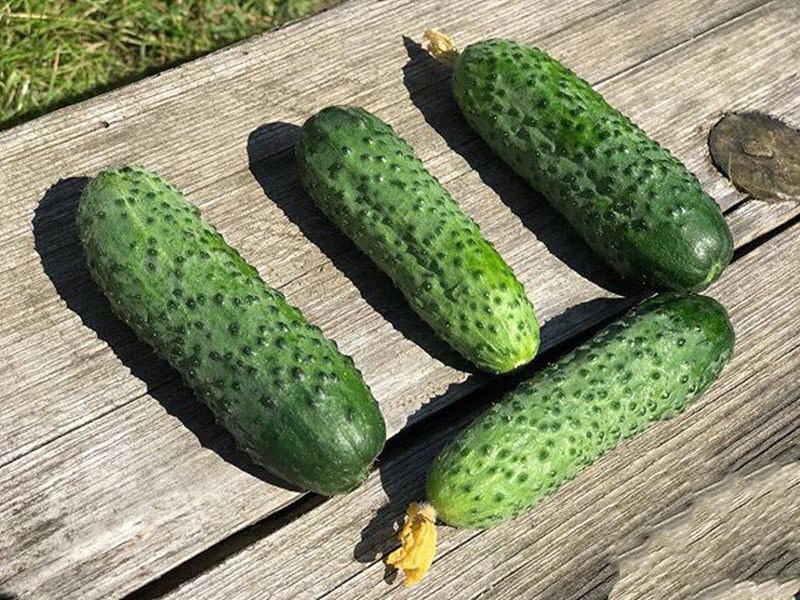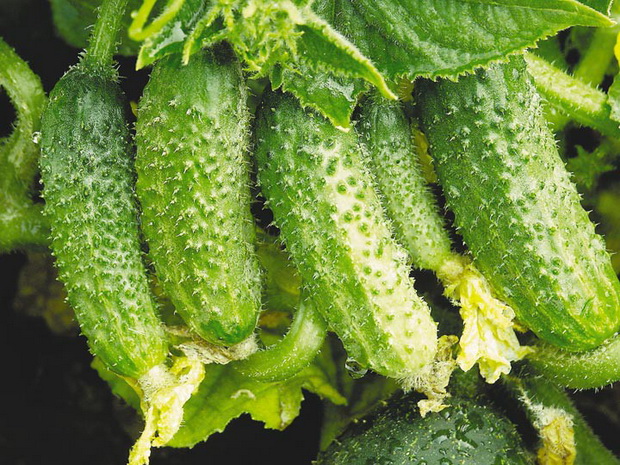Content:
Chayote - what is it? To the ancient Aztecs, this overseas vegetable was known as prickly gourd, cucumber. The tropical fruit is native to Mexico, but is now cultivated throughout the world in warm climates. It is cultivated in the southern parts of Russia, for example, in Sochi.
Chayote is one of the numerous perennial varieties of the pumpkin family. This monoecious plant with a climbing stem resembles a liana in appearance. Slightly lowered shoots of this plant cling to the support with antennae, reaching a length of 20 m. The plant is from the flowering department. Chayote leaves are similar to cucumber leaves, covered with coarse hairs, rather large with a heart-shaped base and 3-7 lobes.
In total, there are 11 variants of this plant. The most popular type with strong greenish fruits, dense peel, resembling a pear in shape, for which it was called pear-shaped zucchini. The pulp of the fruit tastes like a cross between cucumber and zucchini, has a whitish color. The surface of the fruit is bumpy, compressed, like a cam from the outside.
Why is chayote useful?
Chayote has one thin seed inside. The plant is completely edible: leaves, seeds, skin and even roots, so growing chayote is beneficial. The fruits can be eaten both raw and cooked. Raw chayote goes well as a base in salads, as it adds freshness and a pleasant crunch.
The fried vegetable tastes slightly like mushrooms. In addition, it can be baked, steamed. When finished, the pulp becomes tender, so it is good to use it for preparing children's dishes.
Recipe for a delicious and healthy chayote soup
Ingredients:
- 2 pcs. chop onions;
- ½ teaspoon unsalted butter;
- 2 tbsp. tablespoons of chopped fresh cilantro;
- sprigs of fresh cilantro for garnish;
- 1 clove of garlic;
- chayote (2-3 pcs.), peeled and quartered lengthwise, if necessary, pitted, cut into cubes;
- ½ teaspoon of sea salt;
- 1 ¾ Art. water;
- ¼ teaspoon chopped green chili to taste.
Preparation:
- Fry the onions, garlic and chili in oil in a saucepan over low heat, stirring for about 3 minutes.
- Add chayote, salt and 1 tbsp. spoon of cilantro. Cook, stirring occasionally for 2 minutes.
- Pour water and cook over low heat. Cover the saucepan and cook until the chayote is tender, about 15-20 minutes.
- Add remaining ingredients and grind with a blender until smooth.
- Season with salt.
This recipe makes 4 servings. Total cooking time: 45 min.
In addition, chayote (Mexican cucumber):
- it is a good remedy for weight loss;
- controls blood sugar, improves heart function, lowers cholesterol, contains potassium, magnesium, phosphorus and zinc;
- improves skin condition, rejuvenates, cleanses from rashes;
- a source of manganese, which converts fat into energy;
- lowers blood pressure (high levels of potassium in this fetus help in reducing the effects of sodium, thus preventing hypertension);
- improves bowel function, relieves constipation, normalizes digestion;
- indicated for pregnant women as a good source of folate;
- for lactating women, it soothes the gastrointestinal tract like Plantex;
- with anemia, compensates for the deficiency of iron and vitamin B2;
- suitable for diabetics, since fruits have a low sugar index, a lot of fiber and few calories;
- enhances immunity;
- has a mild diuretic property, prevents water retention in the body, therefore it is very useful for people suffering from high blood pressure and high uric acid content;
- dissolves kidney stones, preventing their formation, and also treats urinary tract infections;
- a rich source of magnesium, potassium, phosphorus, vitamin K, preventing bone loss;
- for fibroids, fibromas, prostate and mastopathy in women, drugs based on chayote are prescribed (for example, mastophyte).
Chayote: outdoor cultivation
To grow chayote, it is enough to take a seed from the fruit and germinate it. For these purposes, a mature fruit is chosen, since its seed will have a better chance of germinating. The vegetable is placed in a plastic bag and wrapped lightly. In a few weeks, if the temperature is above 20 ° C, the sprout will hatch. And then it can be sent to a pot of earth. As soon as there are 4 full leaves on the shoot, it can be transplanted into open ground. But not until June. The plant loves soil that is loose, organically fertilized.
The optimum temperature for growing a delicacy is 28-30 ° C. If it drops even slightly, then the plant will stop growing and may not deform.
In general, the cultivation of Mexican chayote cucumber is similar to caring for regular cucumbers. Liana can be tied to a net or run horizontally on a trellis roof.
Usually fruits appear on tertiary vines, so you need to set the correct growth direction. Cutting back on unnecessary parts of the plant will prevent overgrowth and keep it in good shape. The chayote must be pruned, leaving 4 main vines. Both extra shoots and roots are removed. If this is not done, then the fruits will be small and not as tasty as expected.
A month after being sent to the ground, the plant will triple in size, the rudiments of fruits will appear, the leaves will become large. Harvesting takes place after 4 months. One vine is capable of producing from 100 to 300 fruits, which can be stored in the refrigerator for up to a month.
Despite the fact that chayote is a perennial plant, due to the winter temperature below 20 ° C, it stops growing. During frosts, the plant dies completely, because of this, its breeding is not available in many regions of Russia.
It's always fun to discover new flavors. If it's also useful, why not give it a try ?! Even a novice gardener can handle planting and leaving!
